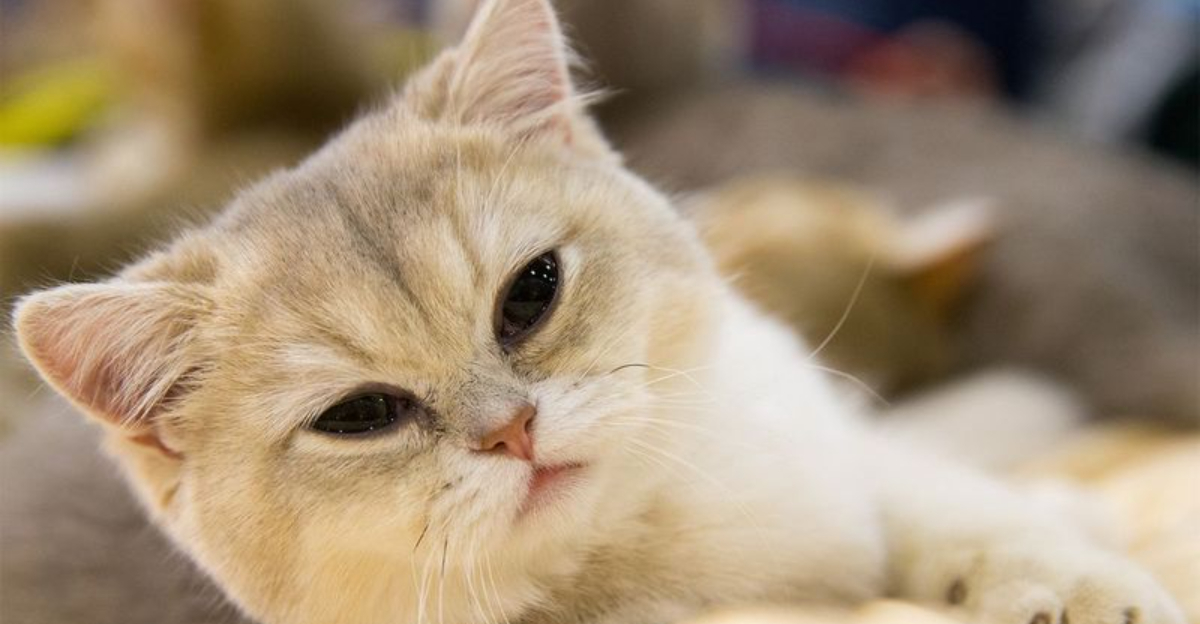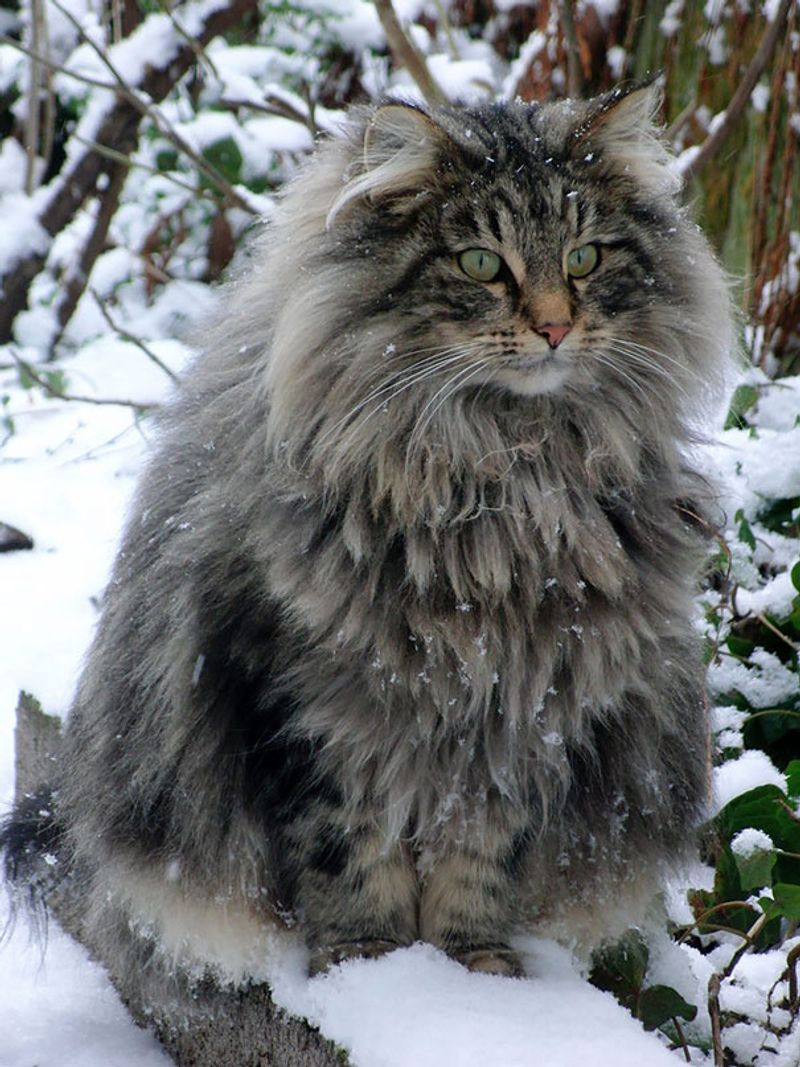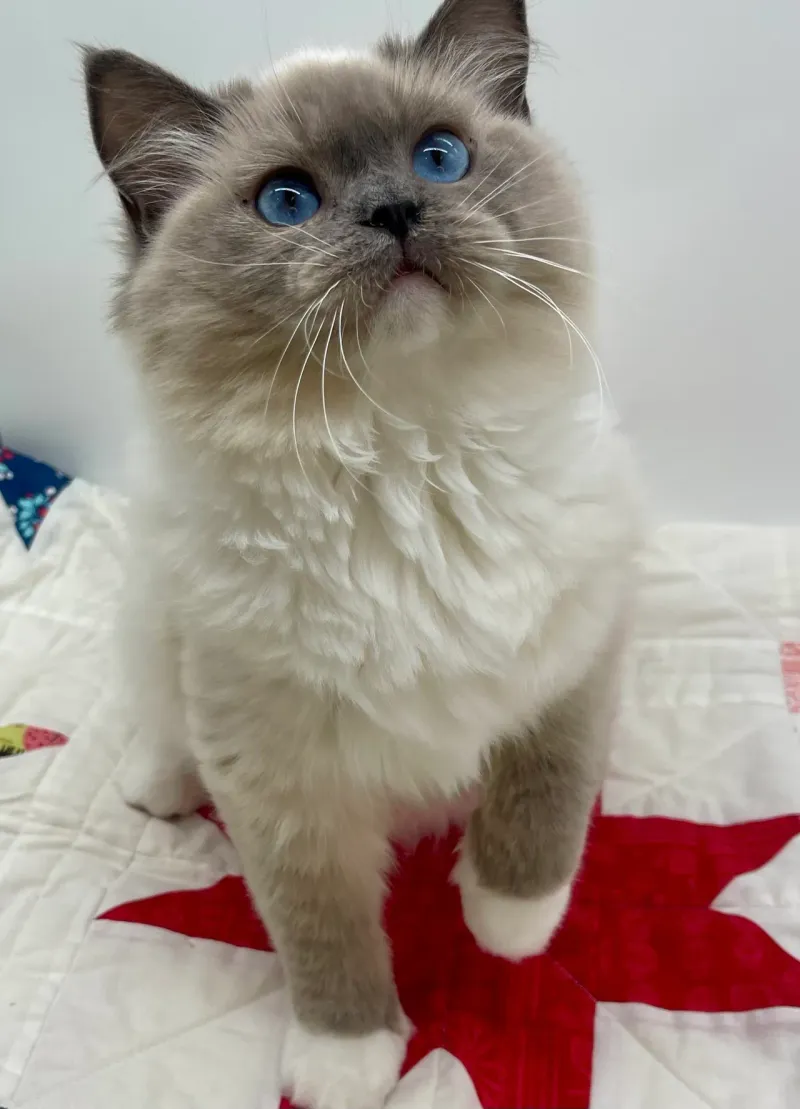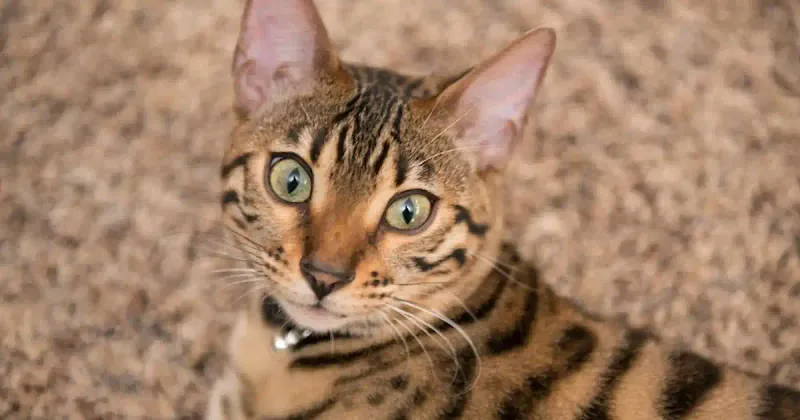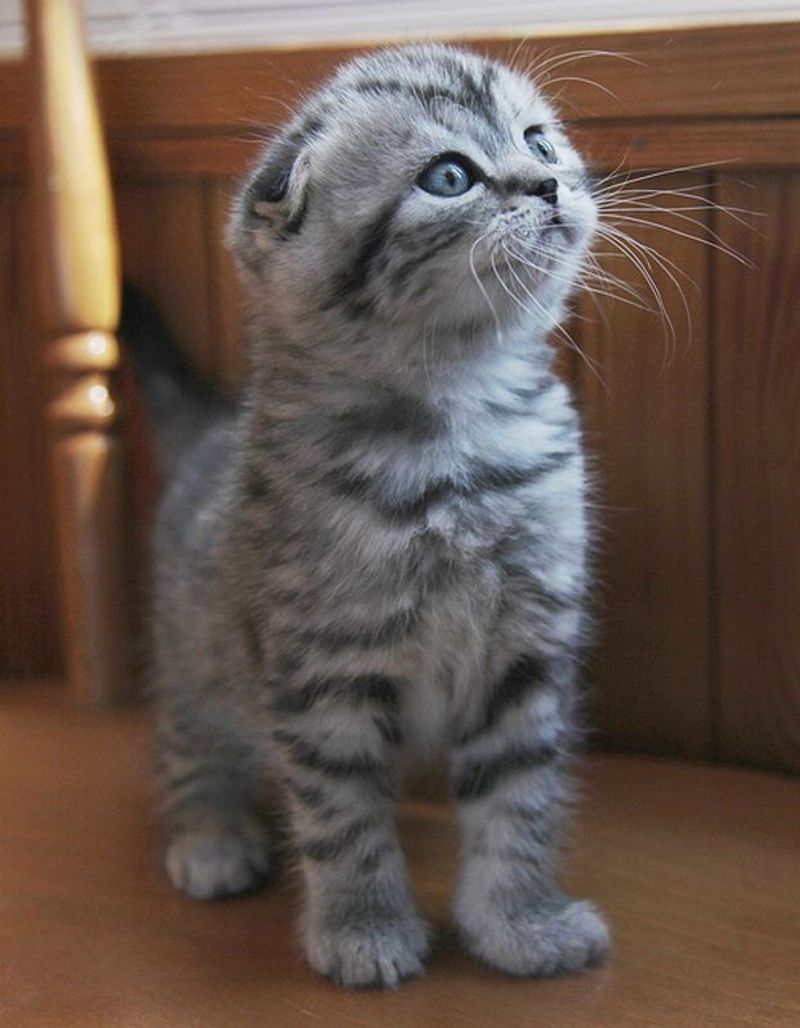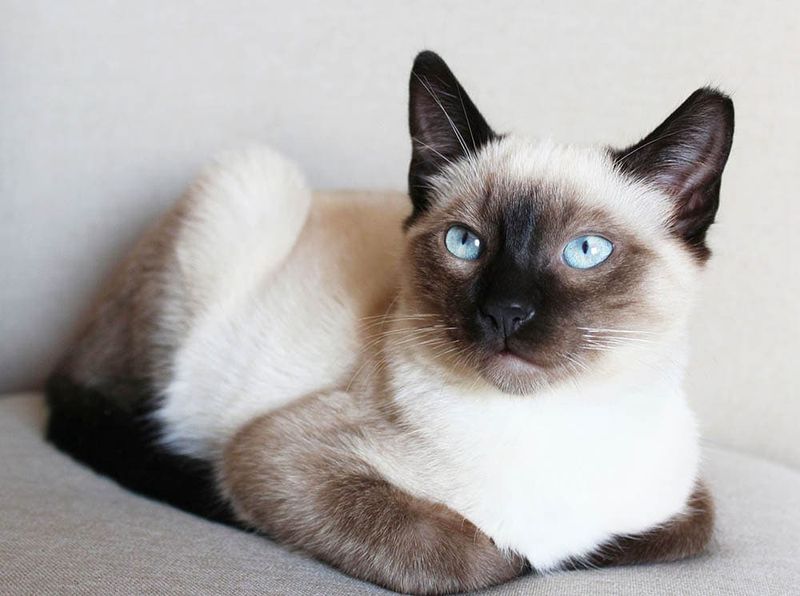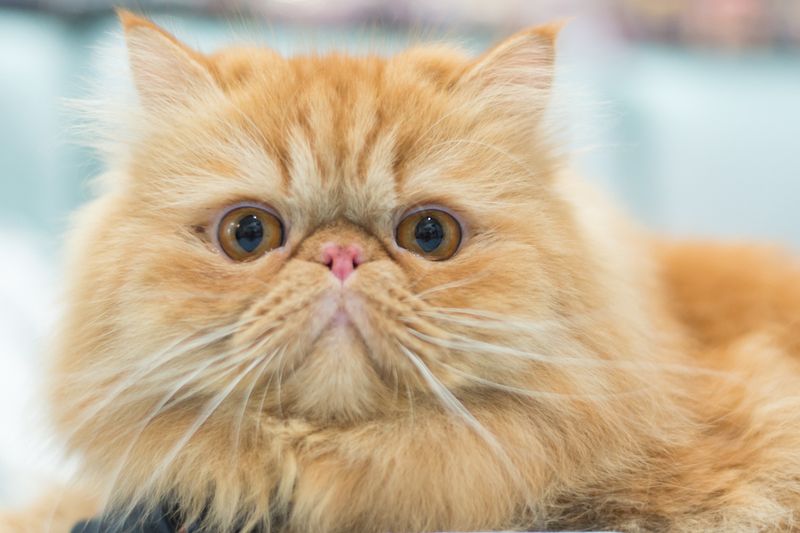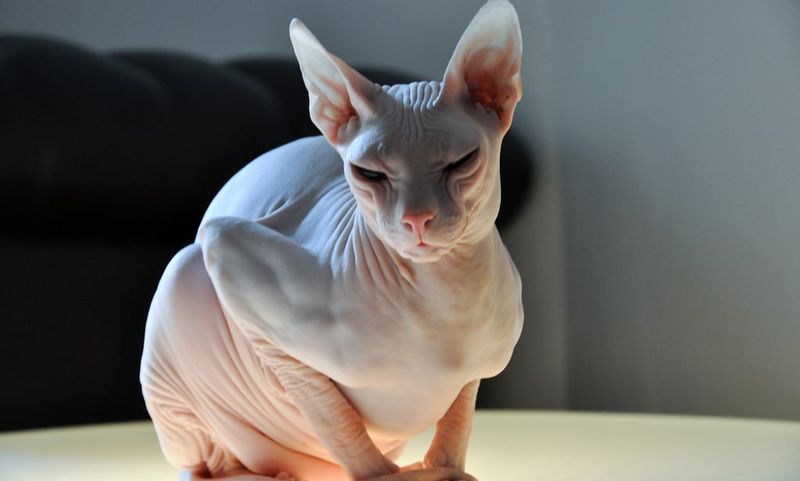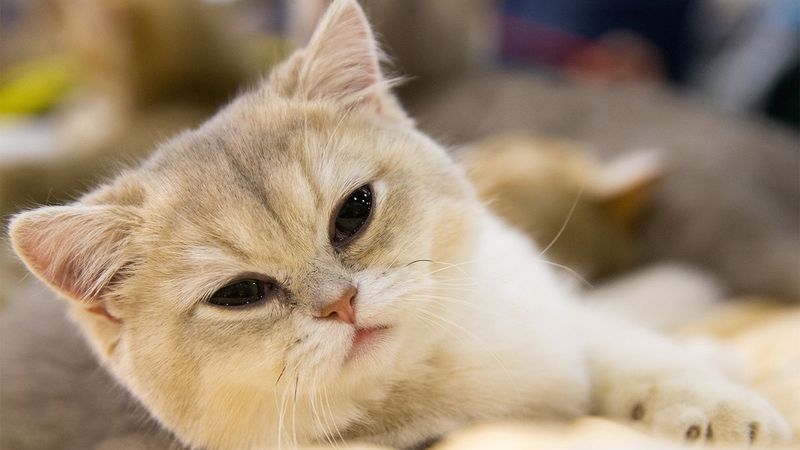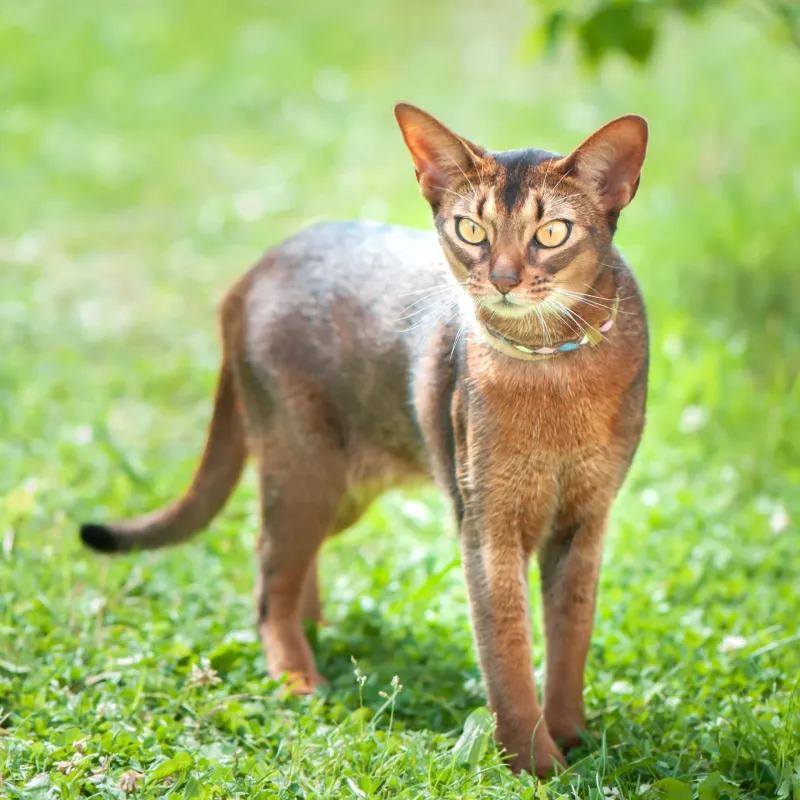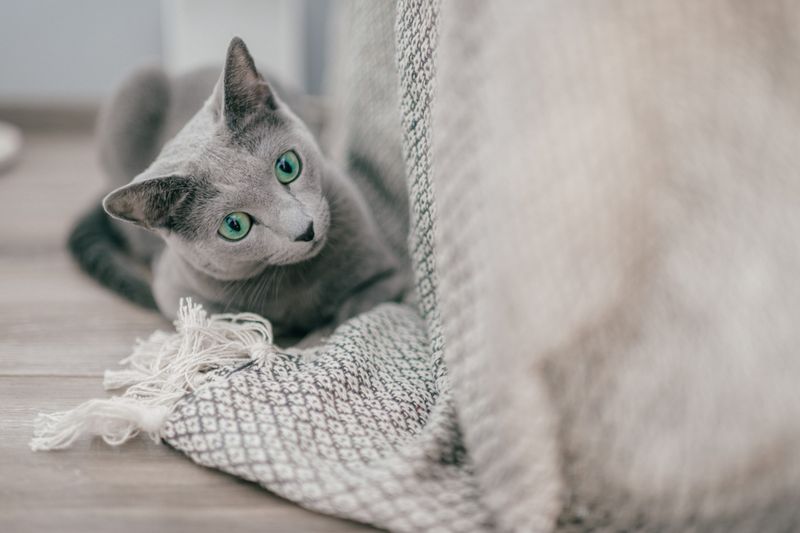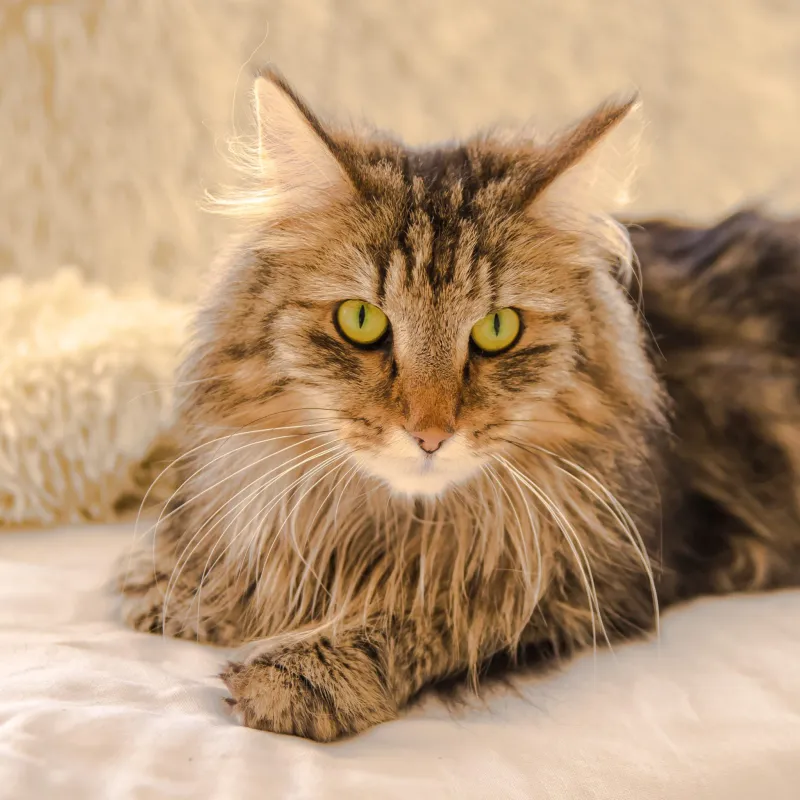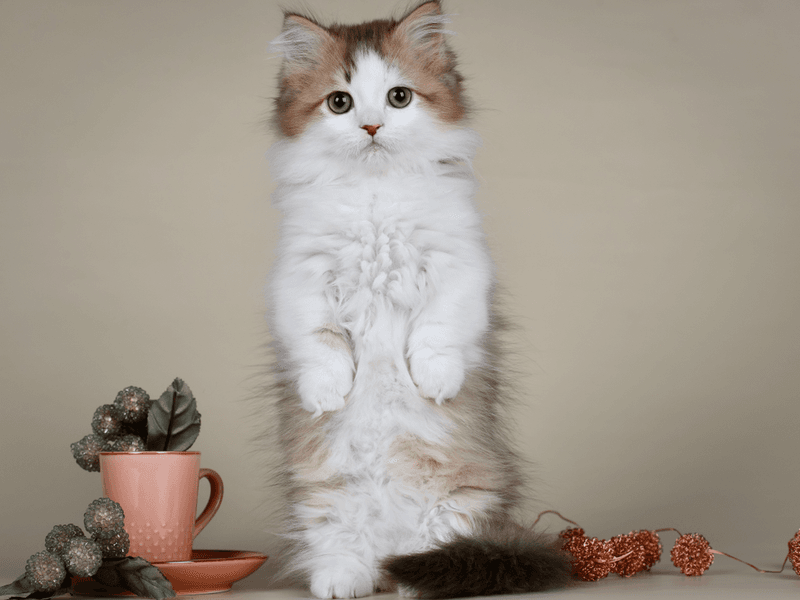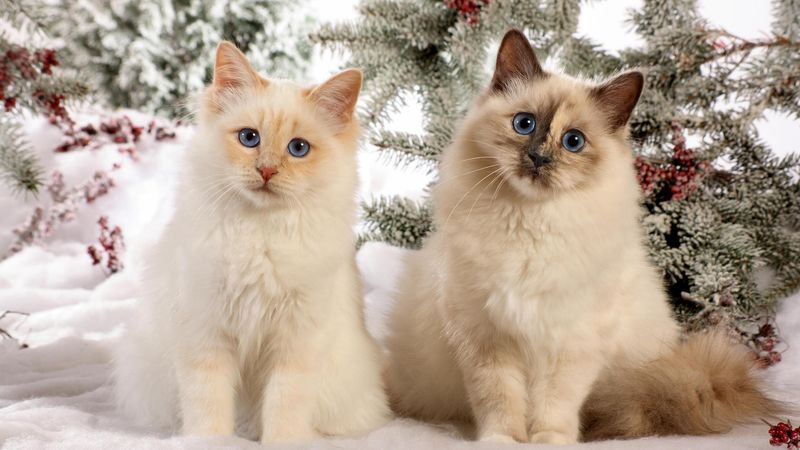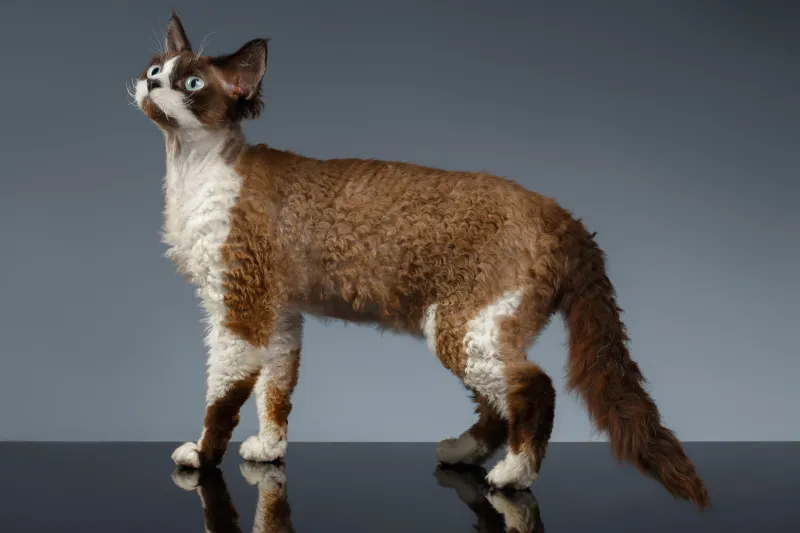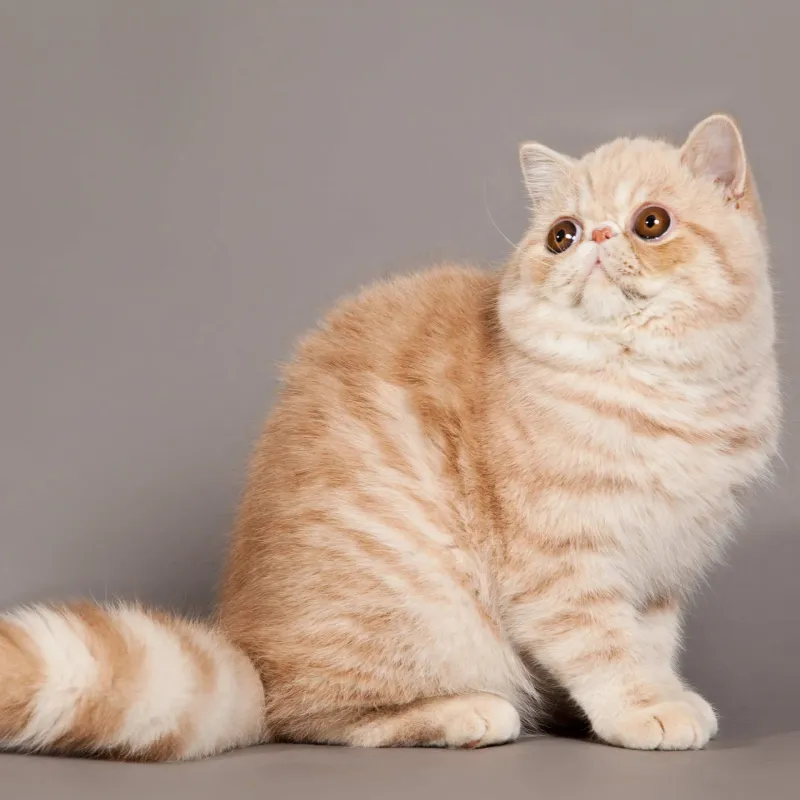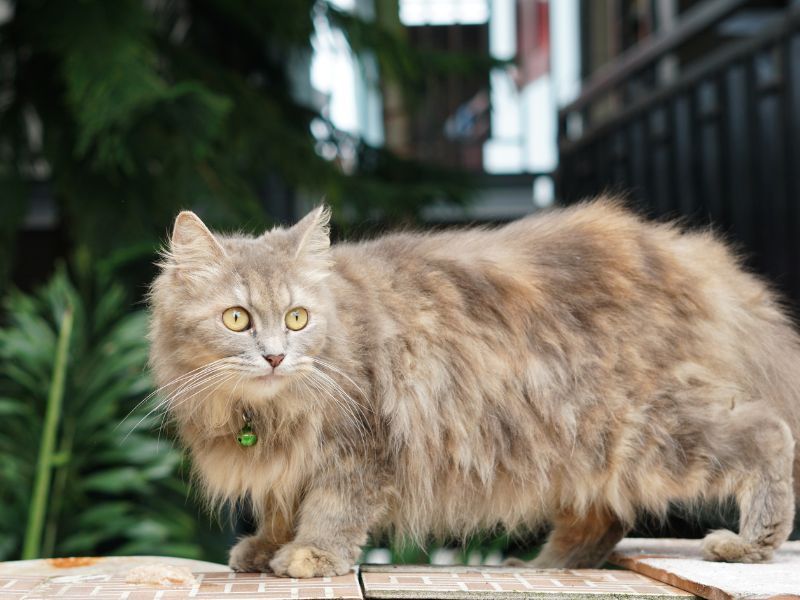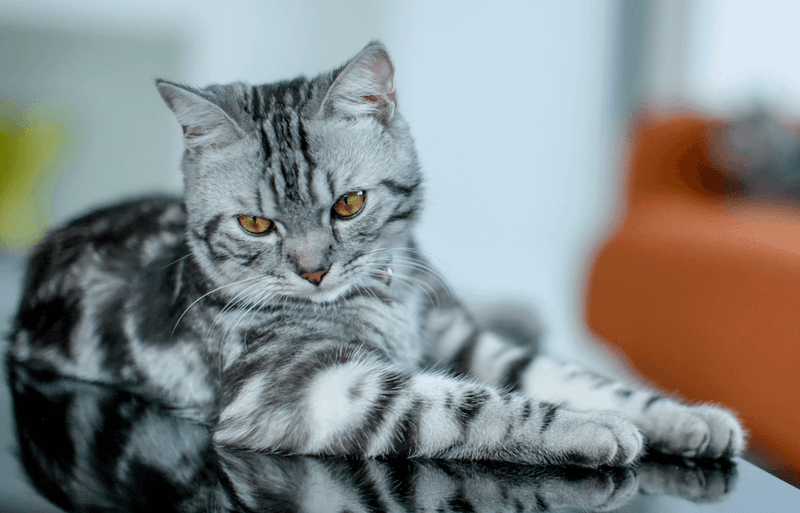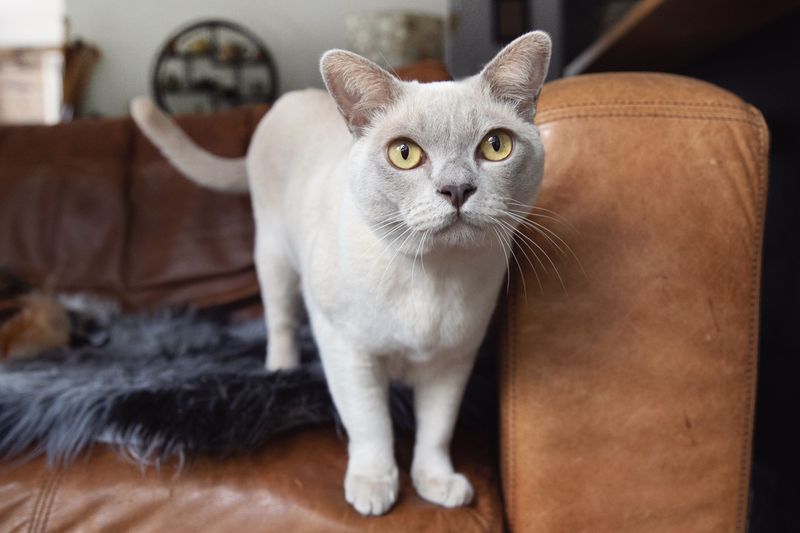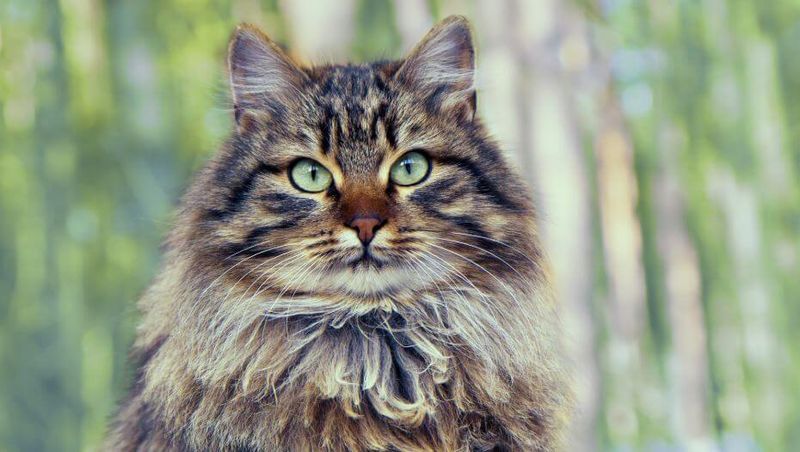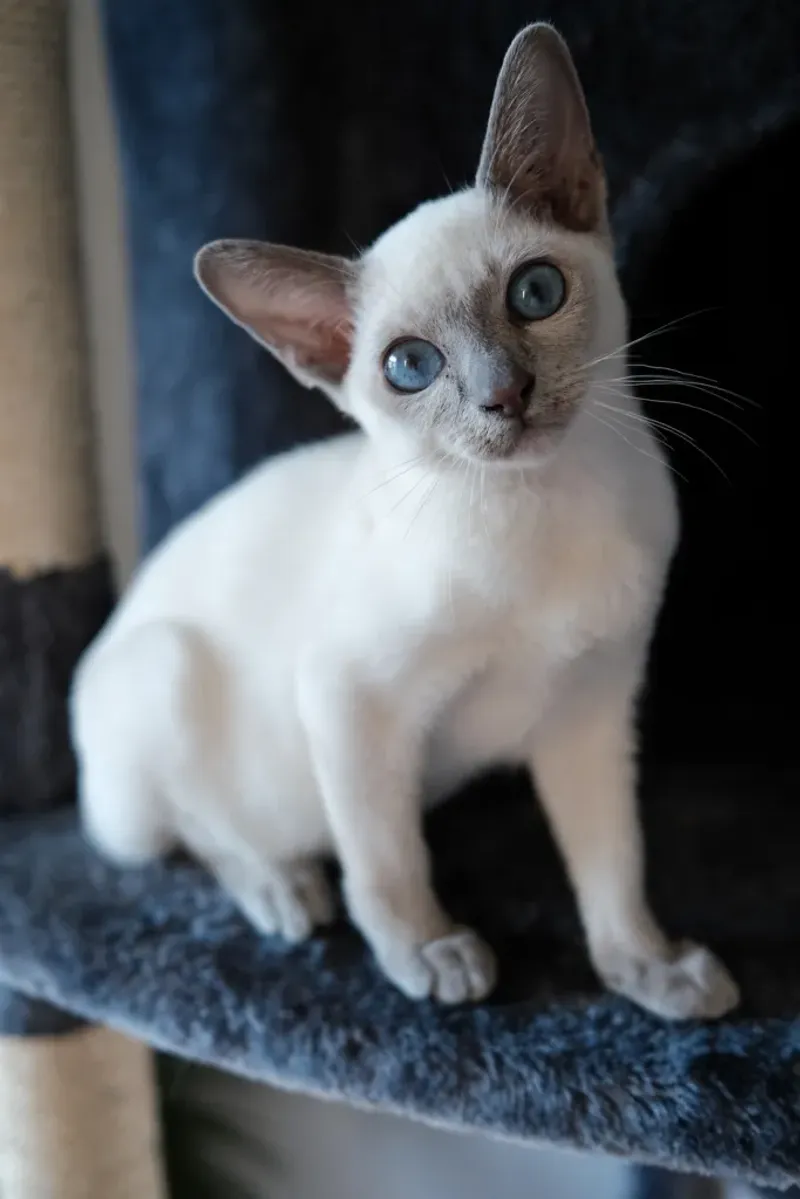📖 Table of Content:
Cats make wonderful companions, bringing joy, comfort, and endless entertainment to millions of homes worldwide. From fluffy giants to sleek miniatures, there’s a perfect feline friend for every type of person and living situation. Let’s explore the most sought-after cat breeds that have captured hearts with their unique personalities, stunning looks, and special traits.
1. Maine Coon
The gentle giants of the cat world, Maine Coons are known for their impressive size and tufted ears that give them a wild appearance. These sociable felines often weigh between 12-18 pounds and have water-resistant shaggy coats.
Maine Coons are excellent family pets because they’re patient with children and get along well with other pets. Their intelligence makes them easy to train, and many learn to play fetch or walk on a leash. Despite their size, they’re nicknamed “gentle giants” for good reason – they rarely use their claws during play and communicate with distinctive chirping sounds instead of typical meows.
2. Ragdoll
Ragdolls earned their name from their tendency to go limp like a ragdoll when picked up. These blue-eyed beauties typically have color-point markings similar to Siamese cats but with semi-long, silky fur and substantial bodies.
Affection defines the Ragdoll personality. They follow their humans from room to room, greet them at the door, and prefer being wherever their family gathers. Many Ragdoll owners describe them as “dog-like” in their loyalty. Their relaxed nature makes them ideal for apartment living, and they rarely climb or jump on furniture compared to more active breeds.
3. Bengal
Sporting wild-looking spotted or marbled coats, Bengals bring the exotic appeal of leopards into domestic settings. Their uniquely patterned coats feature a special sheen called “glitter” that makes them appear to sparkle in sunlight.
Energy radiates from these athletic cats. Bengals need plenty of vertical space, interactive toys, and mental stimulation to stay happy. Many Bengals enjoy water and might join their owners in the shower or play in sinks. Behind their wild appearance lies surprising intelligence. Bengals can learn tricks, solve puzzles, and some owners successfully teach them to use the toilet instead of a litter box.
4. Scottish Fold
Adorable folded ears give Scottish Folds their distinctive owl-like appearance that melts hearts worldwide. This unique feature comes from a natural genetic mutation that affects the cartilage throughout their bodies.
Scottish Folds adapt easily to different environments and family situations. They enjoy the company of children, dogs, and other cats while maintaining a peaceful demeanor that rarely becomes destructive or anxious. These medium-sized cats often sit in the “Buddha position” with their paws tucked under their bodies and can stand on their hind legs to get a better view of interesting activities around them.
5. Siamese
Vocal and opinionated, Siamese cats never let their owners forget they have something important to say. Their striking blue almond-shaped eyes and color-point pattern make them instantly recognizable worldwide. Siamese cats form incredibly strong bonds with their humans.
They demand attention, participate in conversations, and sometimes develop separation anxiety if left alone too long. Their social nature means they often do best with a feline companion. Intelligence shines in this ancient breed. Siamese cats quickly learn their names, can be taught tricks, and excel at figuring out how to open doors, cabinets, and even refrigerators when motivated.
6. Persian
Luxurious long fur and sweet flat faces have made Persians icons in the cat world for centuries. Their regal appearance has earned them roles in movies, advertisements, and as companions to royalty and celebrities alike.
Calmness defines the Persian temperament. They prefer quiet environments where they can lounge on soft surfaces and receive gentle affection. Unlike more active breeds, Persians rarely climb curtains or leap onto high shelves. Daily grooming sessions are essential for these glamorous felines. Their thick coats require regular brushing to prevent painful mats, and their facial structure means their eyes need regular cleaning to stay healthy.
7. Sphynx
Hairless wonders with wrinkled skin, Sphynx cats break the stereotype that all cats are fluffy. Their lack of fur reveals their muscular bodies and makes their oversized ears and lemon-shaped eyes more prominent.
Warmth-seeking behaviors define Sphynx ownership. These cats snuggle under blankets, curl up against warm bodies, and often sleep under covers with their humans. Many owners provide sweaters for their Sphynx during colder months. Surprisingly, Sphynx cats require regular bathing. Without fur to absorb body oils, they need weekly baths to prevent their skin from becoming greasy or developing blackheads, especially in skin folds.
8. British Shorthair
Round faces with plush cheeks give British Shorthairs their signature teddy bear appearance. The classic blue (gray) variety is most famous, but these sturdy cats come in many colors and patterns. Independence makes British Shorthairs perfect for busy households.
They enjoy company but don’t demand constant attention, preferring to observe household activities from comfortable perches. They rarely become clingy or destructive when left alone for reasonable periods. British Shorthairs possess remarkable longevity. With proper care, these robust cats commonly live into their mid-teens and sometimes reach their early twenties while maintaining their dignified demeanor throughout their lives.
9. Abyssinian
Ticked coats with each hair featuring bands of color give Abyssinians their distinctive wild appearance. Their slender bodies, large ears, and almond-shaped eyes reflect their ancient origins and contribute to their exotic appeal. Activity defines the Abyssinian lifestyle.
These cats stay kitten-like well into adulthood, exploring every corner of their homes and investigating any new object. They excel at learning tricks and solving puzzle toys to earn treats. Abyssinians bond strongly with their families but show their affection through playful interaction rather than lap-sitting. They prefer to be near their humans, often perching on shoulders or following them from room to room.
10. Russian Blue
Silver-tipped blue fur gives Russian Blues their distinctive shimmering appearance. Their plush double coats feel like dense velvet when petted, and they shed minimally compared to many other breeds. Shyness with strangers but devotion to their chosen humans characterizes Russian Blues.
These cats take time to warm up to new people but form deep bonds with their families. They often greet their owners at the door but hide when visitors arrive. Russian Blues benefit households with allergies. Their dense coats trap most of their dander, and they produce less of the Fel d 1 protein that triggers allergic reactions, making them more tolerable for some allergy sufferers.
11. Norwegian Forest Cat
Built for harsh Scandinavian winters, Norwegian Forest Cats boast water-resistant double coats and tufted paws that once helped them climb snowy mountains. Their sturdy bodies and bushy tails reflect their development as natural outdoor survivors.
Patience marks the Norwegian Forest Cat’s approach to life. They rarely become stressed by household changes, loud noises, or the addition of new family members. This adaptability makes them excellent choices for busy, growing families. Slow maturity is characteristic of this breed. Norwegian Forest Cats take up to five years to reach their full size and development, with males sometimes weighing up to 16 pounds when fully grown.
12. Munchkin
Short legs don’t slow down Munchkins, who move like ferrets but look like cats. Their unique proportions result from a natural genetic mutation that shortens their leg bones while leaving their spines at normal length. Speed surprises most people who meet Munchkins.
Despite their short legs, they can run remarkably fast and corner with impressive agility. They may not jump as high as other cats, but they compensate with quickness and clever problem-solving. Munchkins often sit up on their hind legs like prairie dogs to get a better view of interesting activities. This adorable posture, combined with their curious expressions, makes them irresistible to many cat lovers.
13. Birman
White-gloved paws are the signature feature of Birmans, setting them apart from other color-point breeds. Legend claims these cats were temple companions in ancient Burma, with their golden eyes reflecting the souls of departed priests. Balance defines the Birman personality.
They’re playful without being hyperactive, affectionate without being demanding, and social without being overly dependent. This middle-ground temperament makes them adaptable to various households. Birmans possess remarkable color genetics. Kittens are born completely white, with their color points developing gradually over the first few weeks of life. Their distinctive white paws remain pristine throughout this color development.
14. Devon Rex
Curly coats and oversized ears give Devon Rex cats an elf-like appearance that turns heads. Their short, wavy fur feels like soft suede, and their large eyes and prominent cheekbones create an otherworldly expression.
Mischief follows Devon Rex cats everywhere. They’re known for learning to open doors, stealing food from plates, and finding inventive ways to reach forbidden areas. Their playful antics continue well into old age, keeping their owners constantly entertained. Devon Rex cats form unusually strong bonds with their humans. They want to be involved in everything their people do, from cooking to bathing, and many learn to ride on their owners’ shoulders like furry parrots.
15. Exotic Shorthair
Persian looks with easier maintenance make Exotic Shorthairs popular for busy cat lovers. Often called “lazy man’s Persians,” they have the same sweet faces and stocky bodies but with short, plush coats that require less grooming.
Quietness characterizes the Exotic Shorthair lifestyle. They express affection through silent companionship rather than demanding meows, often content to simply be in the same room as their favorite humans. Their soft voices are used sparingly. Exotic Shorthairs excel in apartments and smaller homes. Their low activity level means they don’t need large spaces to run, and they rarely climb or jump on furniture. A sunny windowsill and occasional interactive play sessions satisfy their exercise needs.
16. Ragamuffin
Muscular bodies covered in rabbit-soft fur make Ragamuffins irresistible to touch. Related to Ragdolls but with more color variations allowed, these gentle giants can weigh up to 20 pounds when fully grown. Tolerance defines the Ragamuffin’s approach to handling.
They remain relaxed when carried, dressed up, or examined, making them excellent choices for families with children or for therapy work in hospitals and nursing homes. Ragamuffins develop slowly, taking up to four years to reach full maturity. Their kitten-like playfulness continues throughout adulthood, though they balance active play with long periods of peaceful lounging.
17. American Shorthair
Working cats with a proud history, American Shorthairs descended from the ship cats that protected cargo from rodents when settlers first came to North America. Their strong bodies and keen hunting instincts reflect this practical heritage.
Stability makes American Shorthairs perfect family cats. They adjust easily to household routines, tolerate handling well, and maintain a friendly but not overly demanding presence. Their even temperaments mean few behavior problems. American Shorthairs combine playfulness with independence. They enjoy interactive games but also entertain themselves when their humans are busy. This self-sufficiency, combined with their robust health, contributes to their popularity as low-maintenance companions.
18. Burmese
Silk-wrapped bricks is how many describe Burmese cats, noting their surprisingly heavy, muscular bodies beneath sleek, glossy coats. Their rounded heads and large, expressive gold eyes give them a perpetually curious expression. Attachment to humans defines the Burmese personality. These cats want to be involved in everything their people do, often learning to fetch, riding on shoulders, and sleeping under covers with their owners.
Many follow their humans from room to room throughout the day. Burmese cats maintain their playful personalities well into old age. Even senior Burmese engage in kitten-like games, chasing toys and learning new tricks with enthusiasm that belies their years.
19. Siberian
Forest cats built for harsh Russian winters, Siberians have water-resistant triple coats and sturdy bodies that help them survive extreme cold. Despite their thick fur, many allergy sufferers report fewer reactions to Siberians than to other breeds. Fearlessness characterizes the Siberian spirit. These cats rarely show anxiety about new situations, loud noises, or strangers.
Their confident nature makes them excellent companions for active households with children and other pets. Siberians possess surprising agility for their size. They excel at jumping and climbing, often reaching the highest points in a home. Many enjoy playing in water, batting at dripping faucets or even joining their humans in the shower.
20. Tonkinese
Blending the best of Siamese and Burmese breeds, Tonkinese cats combine sleek bodies with moderately wedge-shaped heads and stunning aqua eyes. Their short coats come in a range of colors with subtle pointing that varies in intensity.
Social butterflies of the cat world, Tonkinese crave interaction and make friends easily. They greet visitors warmly, play well with respectful children, and often become best friends with family dogs. Loneliness is their greatest enemy. Tonkinese use their intelligence for fun and mischief. They learn to open doors, find hidden treats, and create games to engage their humans. Many owners describe living with a Tonkinese as having a permanent preschooler in the house.
